University Students Caught in the Discount Dilemma
Entering the lively world of university life at the University of Westminster, where lectures seamlessly transition into all-night cram sessions, I found myself at the crossroads of academic pursuits and the desire for a wardrobe that effortlessly keeps pace with the latest fashion trends. In this whirlwind of academic endeavors, the temptation of quick and affordable fashion, facilitated by platforms like Student Beans and UNiDAYS, calls out like a style guide in the midst of coursework. However, beyond the facade of discounted prices and fashionable purchases lies a multifaceted story that deserves a closer look – a narrative of environmental impact, ethical questions, and the balancing act between affordability and sustainability.

The Temptation of Discounts
As a student navigating the vibrant landscape of the University of Westminster, the allure of discounted fashion through platforms like Student Beans and UNiDAYS resonated deeply with me. These digital lifelines promised exclusive discounts on major fast fashion brands such as Zara, H&M, and Shein – a symbol of hope amid the sea of budget constraints and meager student wallets (Harris, 2022). Suddenly, those coveted runway replicas seemed within financial reach. The temptation is real, but what exactly were we signing up for when we clicked ‘add to cart’?
Fast fashion, epitomized by brands like Zara, H&M, and Shein, has permeated the university fashion scene with its promise of trendy, budget-friendly pieces. These brands capitalize on the need for students to stay on trend without burning through their limited budgets. Zara’s rapid replication of runway styles, H&M’s chic yet affordable collections, and Shein’s vast inventory of pocket-friendly fashion items have made them staples in the closets of many university students. The allure of these brands, coupled with discounts offered by platforms like Student Beans and UNiDAYS, creates a perfect storm for impulsive online shopping sprees.
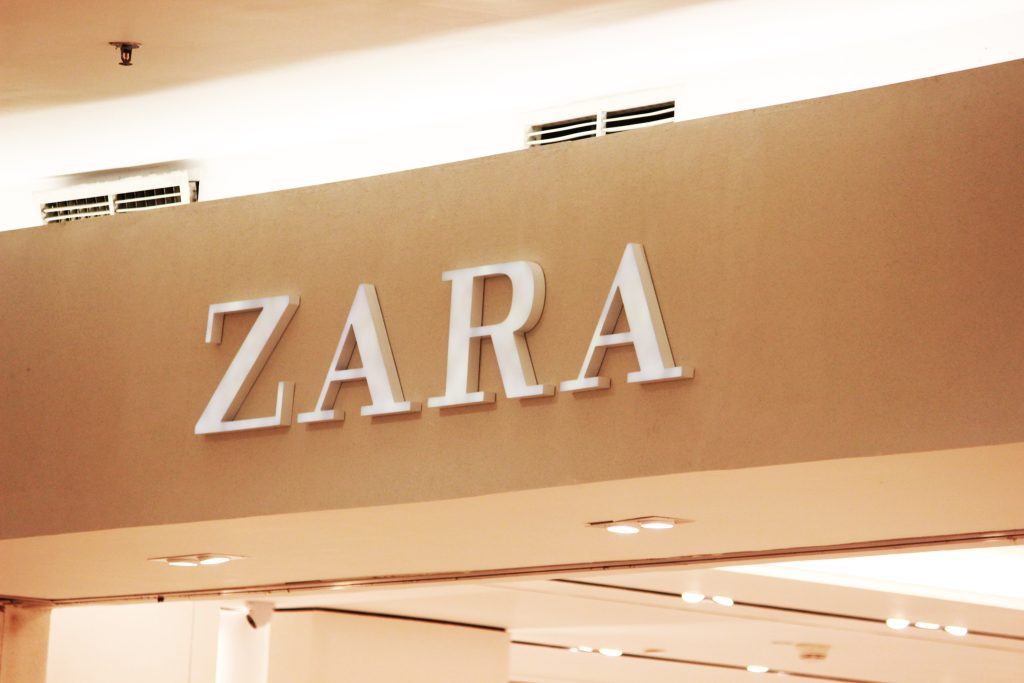


Hidden Costs of Student Discounts
As my virtual shopping cart filled with discounted merchandise from Zara, H&M, and Shein, it was time to unveil the not-so-chic reality. Those tempting discounts veiled a less glamorous truth – the environmental and ethical costs of fast fashion. The cheap prices don’t account for the toll on the planet and the human hands that bring these fashionable pieces to life (Rauturier, 2023). We, lured by the idea of a chic yet pocket-friendly wardrobe from these brands, might not be fully aware of the impact of our seemingly harmless purchases.
The rapid turnover of styles demanded by fast fashion creates a cycle of overconsumption, leading to increased production, resource depletion, and excessive waste (Ciornea, 2020). Zara, H&M, and Shein, while seemingly making fashion accessible, contribute to the rising tide of textile waste that is damaging our environment (Shaw, 2022). The environmental toll of these brands extends beyond the glittering facade of discounts, and students, with their growing awareness of climate issues, are beginning to grapple with the ethical implications of their fashion choices.
Fast Fashion Key Statistics
20% global water waste (Igini, 2023)
10% of world’s carbon emission (Igini, 2023)
Only 12% of clothing material globally recycled (Igini, 2023)
92% million tons of textile waste produced annually (Igini, 2023)
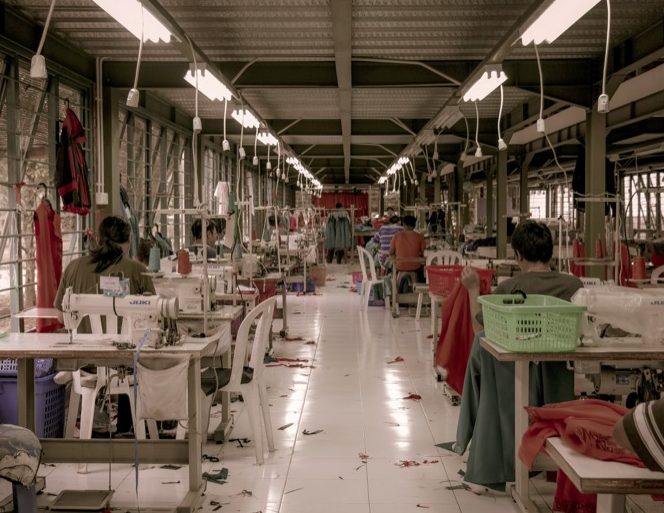

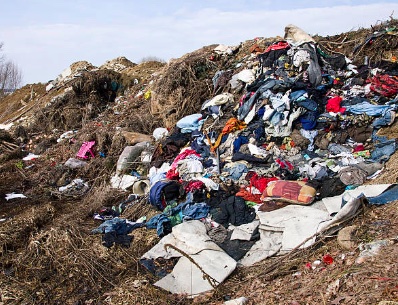
Case Study: The Fast Fashion Industry & Shein
This case study provides a detailed examination of the fast fashion industry, with a specific emphasis on Shein. The analysis delves into the environmental, social, and ethical challenges prevalent in the fast fashion sector. Fast fashion is outlined as a phenomenon characterized by swift replication of trends, shortened manufacturing cycles (typically 2-3 weeks), just-in-time logistics, and a constant turnover of clothing styles (Tacoma UW, 2022). Shein is identified as a major player in this industry.
The study critically assesses Shein’s commitment to sustainability, highlighting concerns related to limited control over products, low transparency, and a disregard for workers’ rights. Shein’s subpar performance on the Fashion Transparency Index, particularly in categories like policy and commitments, governance, traceability, know-show-fix, and spotlight issues, raises doubts about its dedication to social and environmental policies (Tacoma UW, 2022).
As a result of these concerns, the case recommends a cautious approach against investing in and purchasing from Shein and the broader fast fashion industry. The rationale behind this recommendation revolves around apprehensions regarding sustainability, ethical practices, and potential long-term risks (Tacoma UW, 2022).
In lieu of investing in and purchasing from Shein or fast fashion, the study proposes an alternative strategy, suggesting consideration of sustainable and slow fashion (Tacoma UW, 2022).
“The speed at which garments are produced also means that more and more clothes are disposed of by consumers, creating massive textile waste” (Rauturier, 2023)
Balancing Affordability with Sustainability
Balancing affordability with sustainability became a personal challenge. Before falling for the allure of ‘buy one, get one free’ deals from Zara, H&M, or Shein, I considered exploring alternative avenues. Thrift stores, both in-person and online (such as Depop and Vinted), along with second-hand markets and sustainable fashion brands, may not provide the instant gratification of a flashy discount (Ceron, 2023). However, they offer a distinct satisfaction—one that resonates with a more conscious and eco-friendly lifestyle. It’s time to break free from the cycle of disposable fashion and view clothing as an investment rather than a brief fashion craze (Ceron, 2023).
As a student navigating the maze of fashion choices, the challenge lies in finding the sweet spot between affordability and sustainability (Fashionably Male, 2023). The narrative around fashion needs a rewrite – one that emphasizes quality over quantity, timeless pieces over fleeting trends (Jung, 2016). While fast fashion brands like Zara, H&M, and Shein may offer immediate satisfaction, the long-term consequences on the environment and labor practices are too significant to ignore.
I found myself increasingly turning towards sustainable alternatives, recognizing that style and ethics can coexist (Moore, 2022). Thrift stores and second-hand markets became treasure troves of unique finds. Sustainable fashion, with its focus on durability and ethical production, became a guide for me seeking a middle ground between the desire for affordable style and the responsibility I feel towards the planet.


Sustainable Fashion at the University of Westminster
The University of Westminster is actively promoting sustainability in fashion through its Conscious Fashion Space on the Harrow Campus (University of Westminster, 2023a). With support from the University’s Green Fund, the repurposed area emphasizes sustainability, collaboration, and community engagement (University of Westminster, 2022). Students play a central role, taking on responsibilities like organizing events, managing displays, and developing micro fashion businesses. The project collaborates with Love not Landfill, a London-based non-profit, for on-site clothing recycling. Recognizing the fashion industry’s environmental impact, the initiative aims to shift towards a circular and renewable system (University of Westminster, 2023a). Funded by the University’s Green Fund, it aligns with Sustainable Development Goals, fostering understanding, awareness, and behavioral change in environmental leadership (University of Westminster, 2023b). The Conscious Fashion Space serves as an educational hub, contributing to the university’s broader commitment to integrating sustainability across teaching, research, and operations.
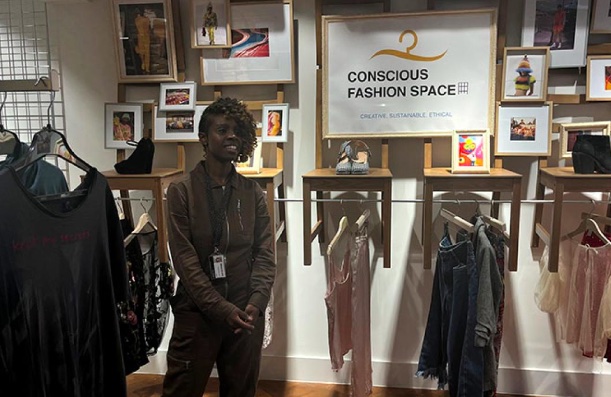
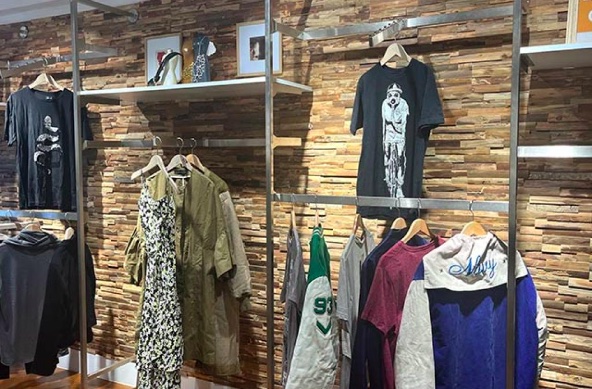
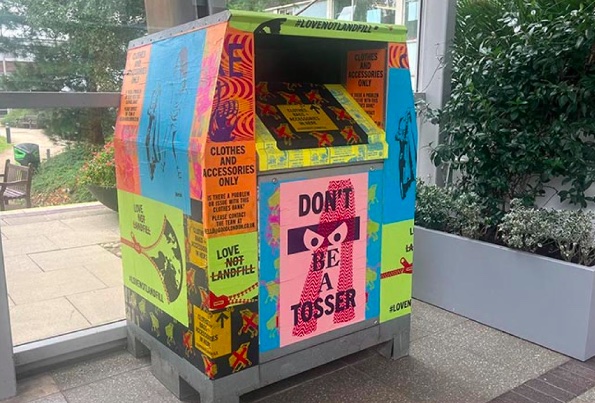
In the university scene, University of Westminster students gravitate towards affordable and trendy fashion via platforms like Student Beans and UNiDAYS. However, the allure of discounted prices conceals environmental and ethical concerns associated with fast fashion giants like Zara, H&M, and Shein. Students face the challenge of striking a balance between affordability and sustainability. Some are shifting to thrift stores and sustainable brands, prioritizing quality for a more eco-friendly lifestyle. This transition reflects a rising call for a fashion ethos that merges style with ethics, fostering a culture of responsibility and sustainability within the university. The University of Westminster stands out as a hub where students, increasingly conscious of environmental and ethical impacts, are steering towards a more responsible fashion approach. Westminster further champions sustainability through its Conscious Fashion Space on the Harrow Campus, featuring on-site clothing recycling. This movement extends beyond campus, echoing a broader demand for a fashion industry that prioritizes both trendiness and the planet’s well-being.
References
Ceron, T.S. (2023). Fashion & Sustainability – UK- 2023. Mintel. Available from https://reports.mintel.com/display/1158169/?fromSearch=%3Ffreetext%3DUK%2520Fashion%2520and%2520Sustainability%2520Market%2520Report%25202023%26resultPosition%3D1 [Accessed 31 December 2023].
Ciornea, R. (2020). Is the Transition to Bioeconomy a Sustainable Solution in Fast-fashion Industry, Considering the Overconsumption? – Premises for Future Research. Marketing – from Information to Decision Journal. 3 (1), 27-44. Available from https://www.researchgate.net/publication/350093345_Is_the_Transition_to_Bioeconomy_a_Sustainable_Solution_in_Fast-fashion_Industry_Considering_the_Overconsumption_-Premises_for_Future_Research [Accessed 30 December 2023].
Fashionably Male (2023). Sustainable Fashion: How College Students Are Embracing Eco-Friendly Styles. Fashionably Male. Available from https://fashionablymale.net/2023/09/26/sustainable-fashion-how-college-students-are-embracing-eco-friendly-styles/ [Accessed 31 December 2023].
Harris, C. (2022). The Good, The Bad, and The Ugly: The Detrimental Impact of the Fast Fashion Industry. UCLA Review. Available from https://uclawreview.org/2022/06/22/detrimental-impact-of-the-fast-fashion-industry/ [Accessed 29 December 2023].
Igini, M. (2023). 10 Concerning Fast Fashion Waste Statistics. Earth.org. Available from https://earth.org/statistics-about-fast-fashion-waste [Accessed 29 December 2023].
Jung, S. and Jin, B. (2016). From quantity to quality: understanding slow fashion consumers for sustainability and consumer education. International Journal of Consumer Studies. 40 (4), 410–421. Available from https://doi.org/10.1111/ijcs.12276 [Accessed 1 January 2024].
Moore, J. (2022). In environmentally cautious efforts, students increasingly use sustainable alternatives rather than single-use plastics, trash. HiLite. Available from https://hilite.org/79361/topstory-2/79361/ [Accessed 1 January 2024].
Rauturier, S. (2023). What is Fast Fashion and Why Is It So Bad? Good On You. Available from https://goodonyou.eco/what-is-fast-fashion/ [Accessed 30 December 2023].
Shaw, R. (2022). Creating a Sustainable Planet: How Fast Fashion is Contributing to Textile Waste. Suny.edu. Available from https://soar.suny.edu/bitstream/handle/20.500.12648/8326/Shaw_Honors.pdf?sequence=1&isAllowed=y#:~:text=Fast%20fashion%20is%20contributing%20to%20the%20overaccumulation%20and%20mass%20amount,this%20industry%20never%20goes%20away [Accessed 30 December 2023].
Tacoma UW (2022). The Fast Fashion Industry & Shein. Tacoma UW. Available from https://www.tacoma.uw.edu/sites/default/files/2022-02/MICCSR_2022_Team_D2_Presentation.pdf [Accessed 1 January 2024].
University of Westminster (2022). Launch of Green Fund 22-23 allows students to gain funding for sustainability-related projects. University of Westminster. Available from https://www.westminster.ac.uk/current-students/news/launch-of-green-fund-22-23-allows-students-to-gain-funding-for-sustainability-related-projects [Accessed 1 January 2024].
University of Westminster (2023a). Student-led sustainable fashion hub opens on Harrow Campus. University of Westminster. Available from https://www.westminster.ac.uk/news/student-led-sustainable-fashion-hub-opens-on-harrow-campus [Accessed 1 January 2024].
University of Westminster (2023b). SUSTAINABLE DEVELOPMENT. University of Westminster. Available from https://www.westminster.ac.uk/about-us/our-university/vision-mission-and-values/sustainable-development [Accessed 1 January 2024].
